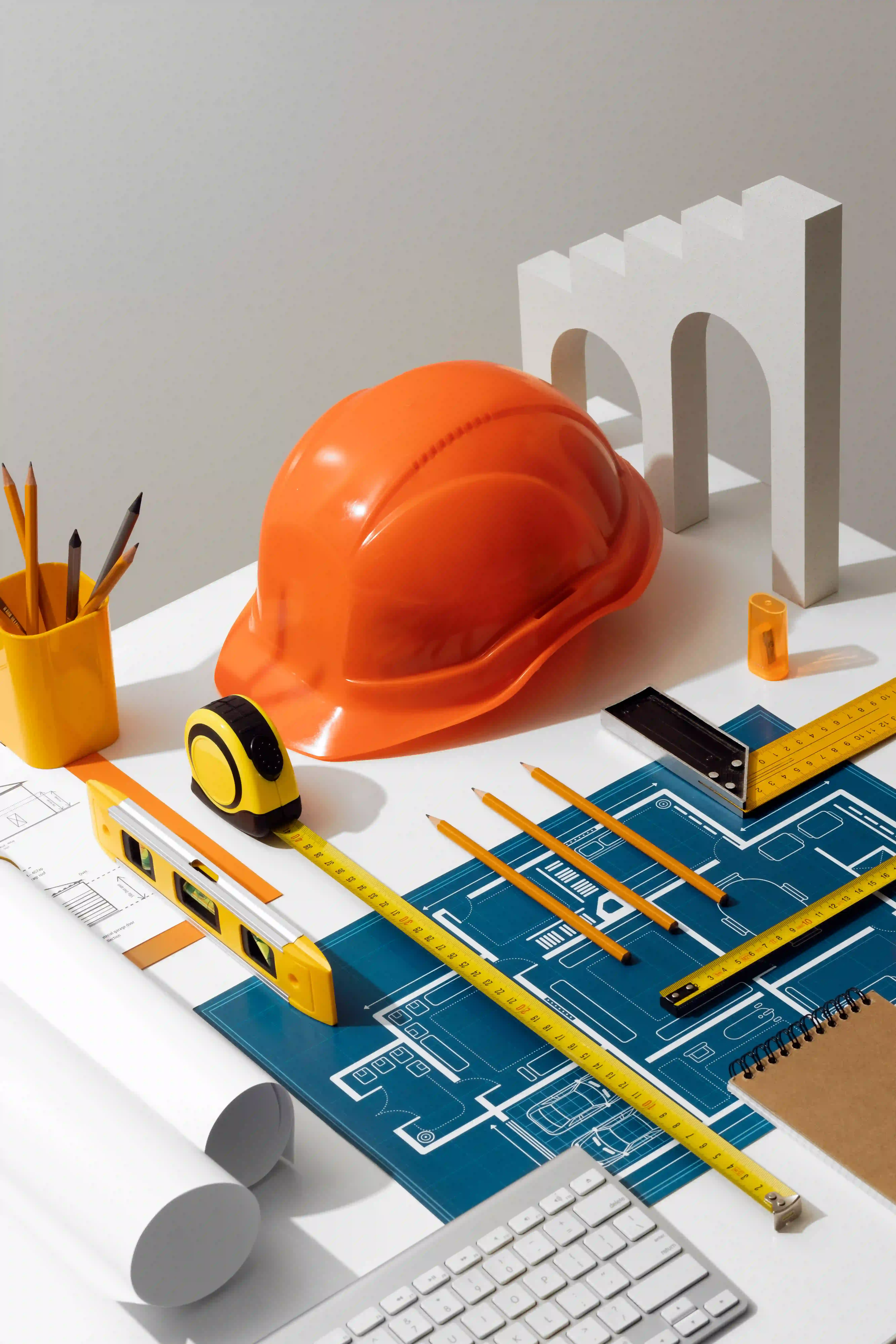
Designed by contractors, suppliers, manufacturers, or fabricators, shop drawings are thorough and exact diagrams, sketches, or blueprints. They are meant to offer specific information on the fabrication, assembly, and installation of a certain component within a building project.
These drawings specify dimensions, materials, fabrication techniques, and installation instructions, therefore expanding the basic design objective expressed in the construction documentation.
They are a vital tool for communication since they help to guarantee that every participant agrees on the exact project needs and standards.
Verifying that the components fit correctly within the overall design and satisfy the required standards depends on shop drawings, which eventually guarantee the quality and accuracy of the building process.
Understanding the Purpose of Shop Drawings
Shop drawings help to close the gap between the design intention and the actual building process thus ensuring correct fabrication, assembly, and installation of every component.
These thorough drawings offer information like exact measurements, materials, and techniques that exceed the broad design guidelines.
Clear and comprehensive presentation of every component of the project helps avoid misunderstandings, lower mistakes, and enable cooperation among manufacturers, suppliers, and contractors by means of shop drawings.
This ensures that all components satisfy the project’s quality and performance criteria and fit together as intended, enabling a more effective and successful building process.
Types of Shop Drawings
1. Architectural Shop Drawings
- Detailed Representation: Architecture shop drawings provide a detailed and precise depiction of building components or systems, going beyond the general design documents.
- Fabrication & Installation Guide: Holds essential information on dimensions, materials, finishes & construction methods. It guides the fabrication, assembly, and installation processes.
- Verification Tool: These drawings serve as a tool to verify that each element aligns with the architect’s intent, ensuring compliance with design specifications & standards.
- Issue Identification: Shop drawings help identify and resolve potential issues before construction begins. This prevents errors & reduces rework.
- Coordination & Communication: They facilitate coordination and communication among contractors, suppliers, and manufacturers. This enhances the overall efficiency and quality of the construction project.
2. Structural Shop Drawings
- Detailed Plans: Structural shop drawings provide detailed and precise diagrams for the fabrication, assembly & installation of structural components like beams, columns & trusses.
- Specification Clarity: These drawings include specific information – dimensions, materials, connections, and construction methods. This ensures accuracy and adherence to design intent.
- Issue Identification: It helps identify and address potential issues or discrepancies before construction begins. This minimizes errors and delays.
- Quality Assurance: By ensuring all structural elements are fabricated and installed correctly, these drawings contribute to the overall safety, efficiency & success of the construction project.
3. MEP Shop Drawings
- Comprehensive Detailing: MEPF (Mechanical, Electrical, Plumbing, and Fire Protection) shop drawings provide detailed and precise representations of MEPF systems. This includes within a building, including layouts, dimensions, and specifications.
- Guidance for Fabrication & Installation: It serves as a guide for the fabrication, assembly, and installation of MEPF components. This makes sure that they are constructed and installed correctly according to the design intent.
- Coordination & Integration: MEPF shop drawings facilitate the coordination and integration of mechanical, electrical, plumbing, and fire protection systems. This verifies they fit seamlessly with the architectural and structural elements of the building.
- Verification & Compliance: They are used to verify that the MEPF systems comply with design specifications, industry standards & regulatory requirements. These MEP shop drawings help to avoid potential conflicts and issues during construction.
- Efficiency & Problem-Solving: By providing a detailed roadmap, MEPF shop drawings help identify and resolve potential issues early in the construction process. This reduces errors, minimizes rework, and enhances overall project efficiency and quality.
Explore More: Maximize Efficiency with MEP BIM Services
Key Elements of Shop Drawings
For a given component or system in a building project, key components of shop drawings are :
- Thorough dimensions,
- Materials requirements,
- Fabrication techniques,
- Assembly instructions, and
- Installation directions.
These sketches clearly and precisely show how each component should be manufactured and combined into the general design.
Often include notes, schedules, and annotations to ensure architectural, structural, and MEPF (Mechanical, Electrical, Plumbing, and Fire Protection) compliance.
Also, among architects, engineers, contractors, suppliers, and manufacturers, shop drawings are a vital tool for communication that ensures all participants understand and satisfy the design intent and quality standards.
Benefits of Shop Drawings
- By offering exact and comprehensive instructions for the manufacturing, assembly, and installation of components, shop drawings give many advantages to building projects.
- By precisely defining dimensions, materials, and building techniques, they ensure that all pieces fit together properly based on the design objective, therefore helping to minimize mistakes and misunderstandings.
- Effective coordination among manufacturers, suppliers, and contractors enabled by shop drawings improves project communication and cooperation.
- Early identification of possible problems helps to save costs and reduce building delays.
- In the end, shop drawings ensure that building projects satisfy legal criteria and client expectations, so enhancing their general quality, accuracy, and efficiency.
Challenges of Shop Drawings
1. Coordination Issues
Shop drawings often involve multiple disciplines and stakeholders. This leads to challenges in coordinating various components like architectural, structural, MEPF (Mechanical, Electrical, Plumbing, and Fire Protection), and others.
2. Complexity & Detail
Creating accurate shop drawings requires meticulous attention to detail. It also needs a thorough understanding of design intent, which can be challenging, especially for complex projects with intricate requirements.
3. Time & Resource Intensive
Producing comprehensive shop drawings can be time-consuming & resource-intensive, particularly when revisions and clarifications are necessary to align with evolving project needs or client preferences.
4. Risk of Errors
Despite detailed planning, errors in shop drawings can occur. This leads to construction delays, rework costs & potential disputes among stakeholders.
5. Regulatory Compliance
Ensuring that shop drawings comply with local building codes, regulations, and industry standards adds another layer of complexity and challenge. This requires expertise and thorough review processes to mitigate risks.
Why Shop Drawings are Necessary?
Because they provide crucial details and specs to ensure accurate fabrication, assembly, and installation of building components, shop drawings help to close the gap between design intent and construction reality.
Among architects, engineers, builders, and manufacturers, they are an essential means of interaction since they clear design criteria and coordinate complex structures like MEPF (Mechanical, Electrical, Plumbing, and Fire Protection).
Shop drawings help to avoid mistakes, lower rework, and improve general project efficiency by specifying exact dimensions, materials, finishes, and installation techniques.
Employing architectural and engineering plans, regulatory standards, and client expectations, they confirm consistency, therefore enabling the effective completion of building projects while preserving quality and adherence to budget and schedule limitations.
Frequently Asked Questions
1. How are shop drawings different from architectural drawings?
Architectural drawings give a broad overview of the project. Shop drawings get into the nitty-gritty details. They provide specific info on dimensions, materials & how each part will be made.
2. Who creates the shop drawings?
Shop drawings are typically prepared by contractors or fabricators who will be doing the actual work. They translate the architect’s or designer’s vision into actionable plans.
3. When in the project timeline are shop drawings used?
Shop drawings are usually created and reviewed after the initial design phase but before construction begins. They ensure everything is planned out perfectly.
4. Can I make changes to the shop drawings?
Yes, shop drawings can be revised. It’s important to review them carefully and suggest any changes before final approval to make sure everything aligns with your expectations.

.png)

